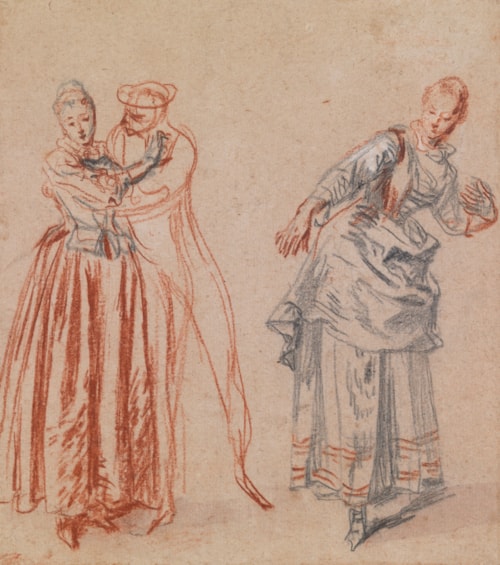
Jean-Antoine WATTEAU
Valenciennes 1684 - Nogent-sur-Marne 1721
Biography
Born in the northern French city of Valenciennes, Jean-Antoine Watteau arrived in Paris around 1702, and there studied with Claude Gillot and, later, Claude III Audran. Gillot’s particular influence is seen in some of Watteau’s earliest works, which depicted scenes from the commedia dell’arte; a popular feature of street life in Paris. In 1709, at the age of twenty-five, he won a second prize in the Prix de Rome competition at the Académie Royale de Peinture et de Sculpture. Perhaps disappointed with losing the chance to study in Italy, Watteau returned to his native Valenciennes for a year. After his return to Paris, accompanied by his pupil Jean-Baptiste Pater, he was provisionally received (agrée) into the Académie in 1712, and was invited to submit a painting as his reception piece. This morceau de réception, however, was not presented to the Academy for another five years, with the result that Watteau was only admitted (reçu) as a full Academician in 1717, with his painting The Pilgrimage to the Island of Cythera. He was, in fact, admitted as a painter of fêtes galantes; a genre created by the Académie especially for him. By this time Watteau was already quite successful, and counted among his patrons and supporters Pierre Crozat, whose superb collection of Old Master drawings he was able to study at length, as well as Count Carl Gustaf Tessin and the Duc d’Arenberg. In 1719 he spent a year in England, where he painted two works for the physician and collector Richard Mead, and on his return to France in 1720 lived for some time with his friend, the art dealer Edmé-François Gersaint. Already in poor health after his return from London, he died the following year.



